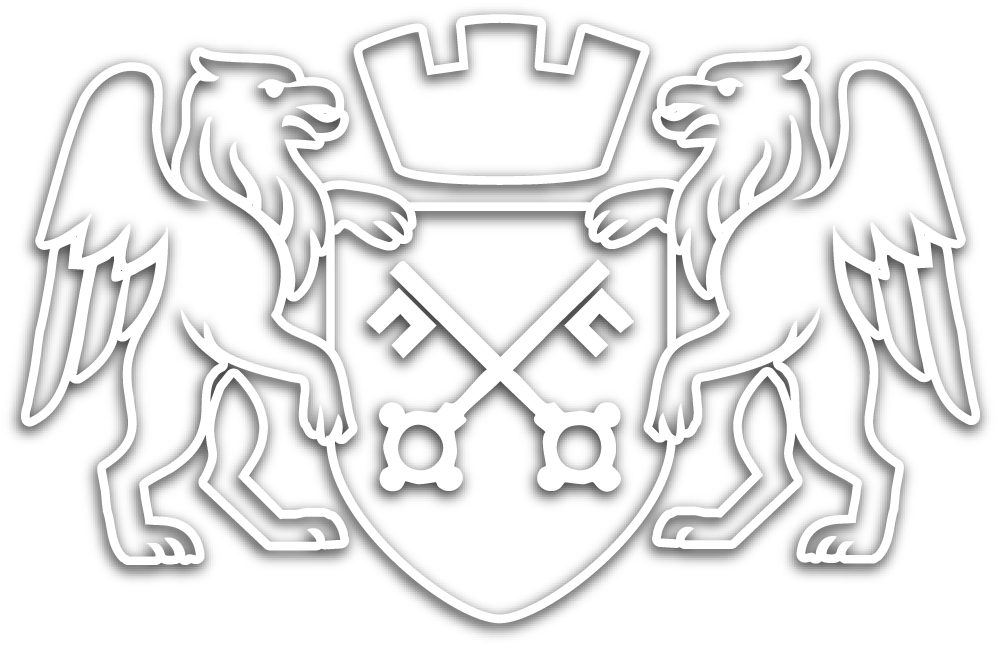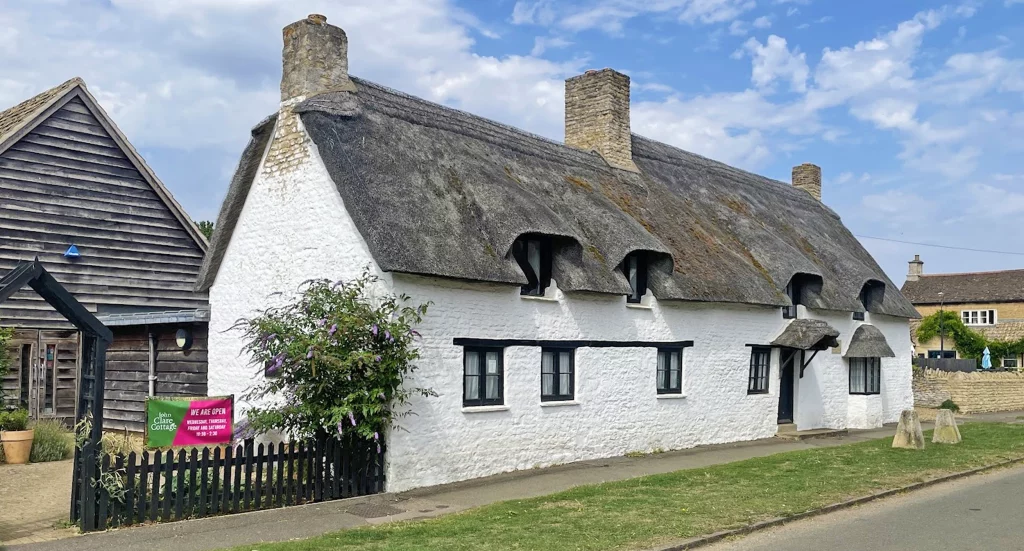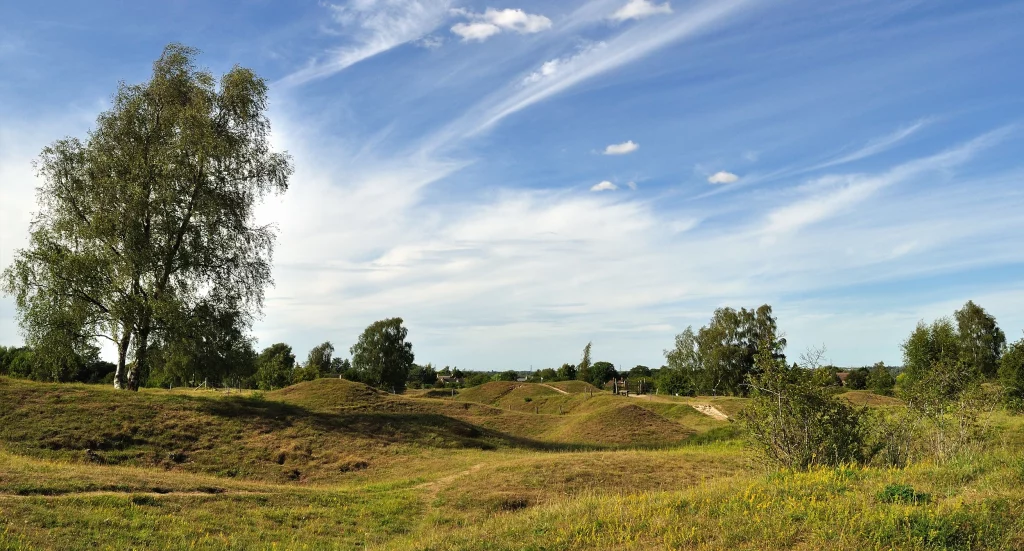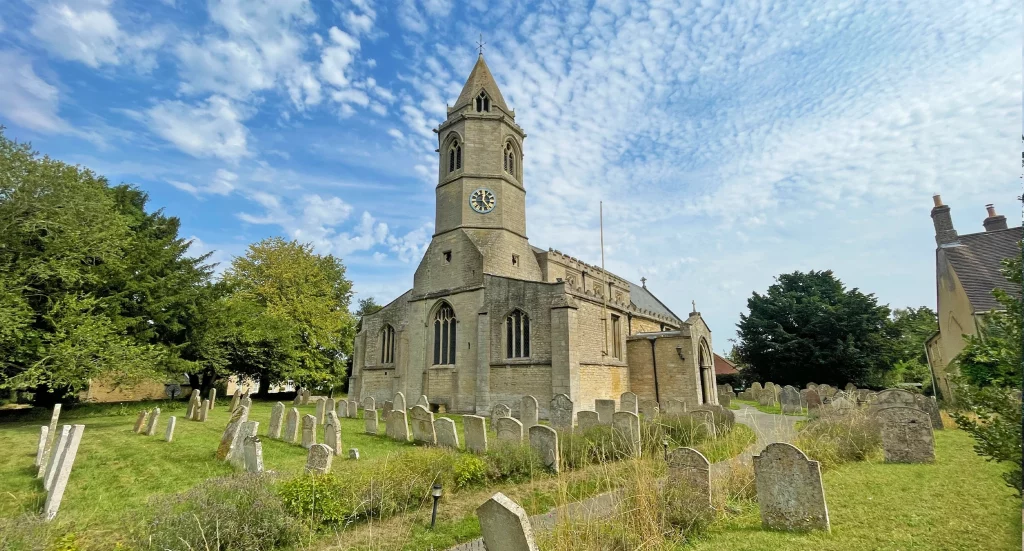Clare Country
A rural landscape of timeless beauty, where ancient villages, stone churches, and open fields shaped the life and verse of England’s “peasant poet,” John Clare.
Clare Country lies to the north-west of Peterborough, embracing the villages of Helpston, Glinton, Northborough, Peakirk, Etton, Maxey, Barnack, Wittering, and their surrounding landscapes. It is a place of rolling meadows, stone-built cottages, winding lanes, and big skies — a countryside that still reflects the scenes captured by John Clare in his poetry two centuries ago.
Helpston, at the heart of the quarter, is the birthplace of Clare (1793–1864), whose work captured the everyday beauty of rural life, the rhythms of the farming year, and the voices of his neighbours in dialect and song. Clare wrote of the fields, hedgerows, birdsong, and flowers that surrounded him, but also chronicled the social and environmental changes brought by enclosure and the loss of traditional ways of life. His work stands as a testament to the value of local heritage and the deep relationship between people and place.
The heritage here is rich and layered. Barnack is famed for its Anglo-Saxon church and “Barnack Rag” limestone, once quarried to build cathedrals and castles across England. Glinton’s St Benedict’s Church, with its soaring spire, appears in Clare’s poems and remains a landmark across the flat fenland horizon. Northborough holds the manor house where Elizabeth Cromwell, widow of Oliver Cromwell, lived in her later years. Peakirk preserves the tradition of St Pega, sister of St Guthlac, with a village church dedicated in her name. Maxey reveals traces of prehistoric causeways and Roman settlement, while Wittering holds both Saxon history and a living connection to the RAF and modern aviation.
This is a quarter where heritage is not frozen in time but remains part of daily life — a patchwork of ancient churches, farmsteads, wildlife meadows, and village greens, bound together by walking routes, bridleways, and quiet lanes. Its identity is not only literary, but also one of endurance and authenticity — a landscape still speaking in its own voice.
Geographical Layout:
-
- Helpston (John Clare’s birthplace and centrepiece of the quarter)
- Glinton, Northborough, Peakirk, Etton
- Maxey, Barnack, Wittering and surrounding countryside
- Historic churches, stone cottages, meadows, and nature reserves
Cultural Anchors & Symbols:
- John Clare’s Cottage and visitor centre, Helpston
- St Benedict’s Church, Glinton (poetic landmark)
- Barnack Anglo-Saxon church and historic limestone quarries
- Northborough Manor (Elizabeth Cromwell’s home)
- Peakirk’s St Pega’s Church and pilgrimage history
- Maxey causeways and Roman archaeology
- Wittering aviation heritage and RAF links
- Annual John Clare Festival and Midsummer Cushions tradition
John Clare Cottage
Step inside the humble 19th-century cottage where one of England’s greatest rural poets, John Clare, was...
Sacrewell Heritage Farm & Country Centre
Discover rural life at Sacrewell, where you can meet friendly farm animals, explore play areas, and see a fully restored 18th-century watermill in action.
Exotic Pet Refuge
Meet meerkats, monkeys, reptiles, and more at this dedicated animal rescue centre, open on select days to support its vital conservation work.
Barnack Hills & Holes NNR
Wander among wildflowers and rolling grassy humps in this former medieval quarry, now one of Britain’s richest wildlife habitats.




